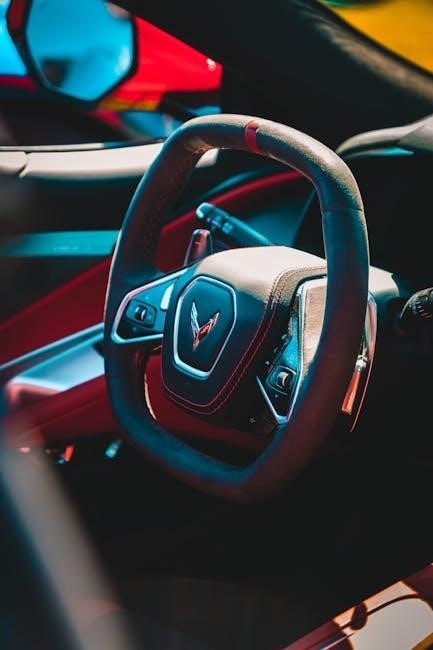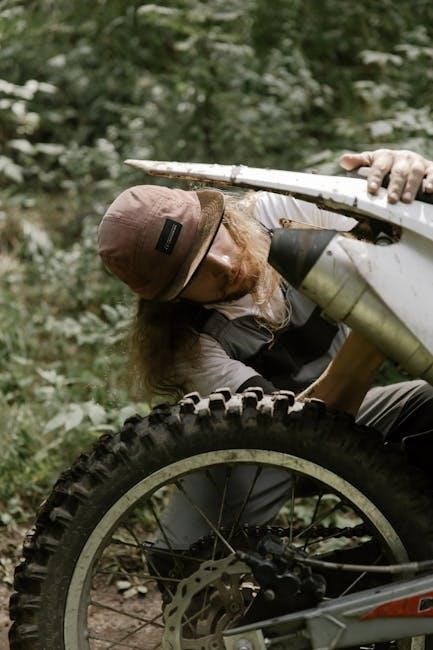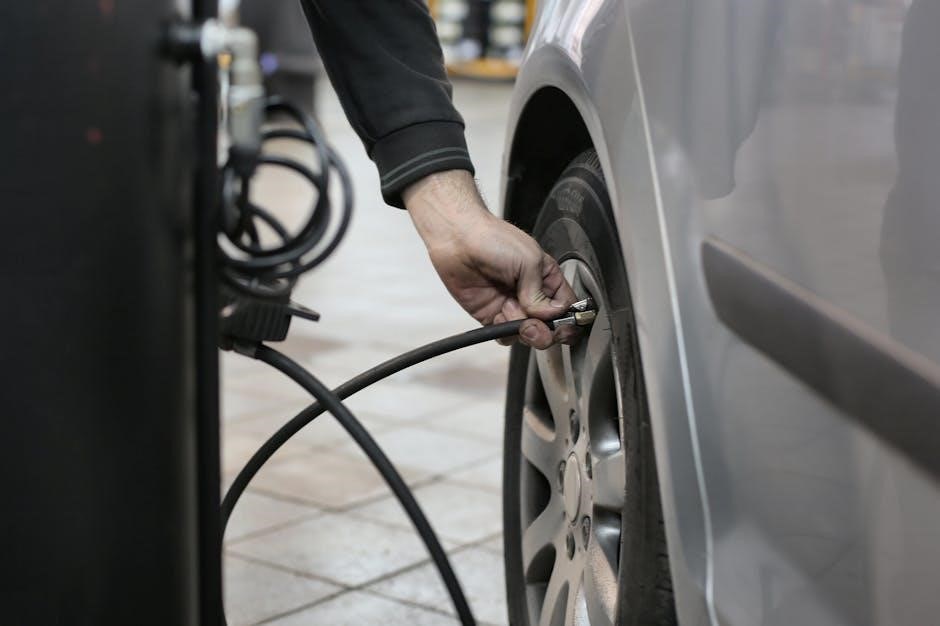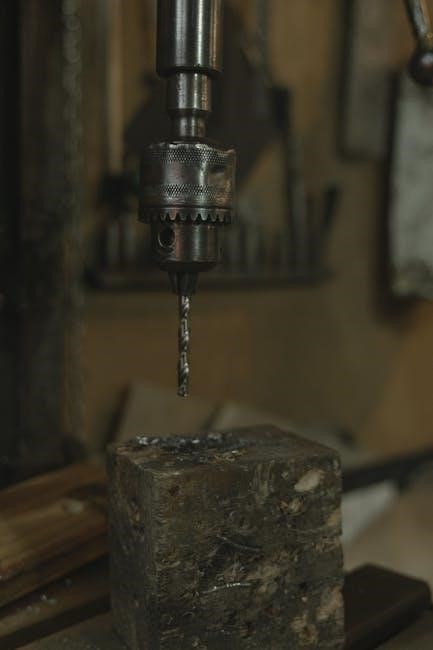Manual Transmission Swap Cost: A Comprehensive Guide

Embarking on a manual transmission swap offers enhanced control. Costs vary widely, from $1,000 to $10,000+. This guide breaks down key factors.
Understanding the Manual Swap Process
Considering a manual swap? It’s crucial to grasp the process. Begin with thorough research, identifying necessary components for your specific vehicle. A cost analysis follows, encompassing parts, labor, and potential unforeseen expenses. Factors like vehicle model significantly affect the complexity. Turbo models may require different components than non-turbo versions. Ensure compatibility by sourcing parts from similar vehicle types (e.g., turbo to turbo). Wiring can present challenges, potentially leading to electrical quirks if not handled carefully. Modern cars use CAN networks, making it more than just adding a clutch pedal. Some even suggest that the car may never function as factory intended and you may always have small electrical quirks if you merge the wiring harnesses / cut and splice. The days of just adding a clutch pedal, a manual transmission, and going are long behind us. Budgeting and meticulous planning are essential for a successful manual swap. You will also want to get a proper copy of vagcom so you can easily re-code the soft coding on the ECU to make it think it is manual.

Factors Influencing the Cost
Several factors drastically influence the overall cost of a manual transmission swap. The vehicle’s make and model play a pivotal role, with some models having readily available manual options, while others demand custom fabrication or sourcing rare parts. Parts sourcing—whether opting for new or used components—significantly impacts expenses. Used parts may offer cost savings but carry the risk of wear and tear, potentially leading to future repairs. Labor costs are another crucial consideration, varying based on whether you undertake a DIY installation or hire professional assistance. DIY swaps can save on labor but require expertise and time, while professional installation guarantees expertise but incurs higher costs. Furthermore, additional factors such as the complexity of the vehicle’s electronics, the availability of donor cars, and the region where the swap is performed all contribute to the final price tag. Understanding these factors is essential for accurate budgeting.
Vehicle Model
The make and model of your car are primary determinants of the manual swap cost. Some vehicles were originally offered with both automatic and manual transmissions, making the swap relatively straightforward. These models often have readily available parts and established guides, lowering both parts sourcing and labor costs. For instance, specific Honda Civics, Nissans, and Toyotas are popular for manual swaps due to the availability of JDM engines and transmissions. Conversely, if your vehicle was exclusively produced with an automatic transmission, the swap becomes significantly more complex and expensive. This scenario may require custom fabrication of parts like linkages, mounts, and driveshafts. Sourcing compatible parts can also be challenging, potentially necessitating a search for rare or discontinued components. Luxury cars can also be expensive, especially if you need parts for the swap from BMW or Mercedes-Benz. Before committing to a swap, research the feasibility and availability of parts for your specific vehicle model;
Parts Sourcing (New vs. Used)
The choice between new and used parts heavily influences the overall cost of your manual transmission swap. Opting for new parts, including the transmission, clutch, linkages, and other supporting components, guarantees reliability and longevity. However, this approach significantly increases the initial investment. A new factory-remanufactured transmission can cost between $1,300 to $3,400, while aftermarket kits can exceed $5,000. Used parts offer a more budget-friendly alternative, but come with inherent risks. Sourcing a used transmission from a salvage yard or online marketplace can save a considerable amount of money upfront. However, the condition of used parts is often uncertain, and there’s a possibility of premature failure. Thorough inspection of used components is crucial, and it’s advisable to obtain warranties whenever possible. Consider the long-term implications of your decision. While used parts may seem appealing due to their lower cost, the potential for repairs or replacements down the line could ultimately negate any initial savings.
Labor Costs (DIY vs. Professional Installation)
The labor costs associated with a manual transmission swap represent a significant portion of the overall expense. Choosing between DIY and professional installation hinges on your mechanical skills, available tools, and time commitment. Opting for DIY installation can save a substantial amount of money, potentially reducing the total cost by $2,000 to $3,000 or more. However, this approach requires a comprehensive understanding of automotive mechanics, access to specialized tools, and the ability to troubleshoot unforeseen issues. The complexity of the swap varies depending on the vehicle model, and some installations may require welding or fabrication skills. Professional installation ensures that the swap is performed correctly and efficiently. Reputable shops have the expertise and equipment to handle any challenges that may arise during the process. Labor costs can vary significantly based on the shop’s hourly rate and the complexity of the installation. Obtaining quotes from multiple shops is essential to ensure a fair price.
Cost Breakdown: Parts and Labor
Understanding the cost breakdown for a manual transmission swap involves separating the expenses into two primary categories: parts and labor. The parts category includes the transmission itself, along with all the necessary supporting components required for a successful installation. Transmission costs can vary significantly, ranging from $1,000 to $3,400 or more, depending on whether you opt for a used, rebuilt, or new unit. Supporting parts, such as linkages, mounts, driveshaft, and clutch components, can add another $500 to $1,500 to the total. Labor costs, on the other hand, depend on whether you choose to perform the swap yourself (DIY) or hire a professional mechanic. DIY installation can save you a substantial amount of money, but it requires a significant time commitment and a solid understanding of automotive mechanics. Professional installation can range from $2,000 to $3,000 or more, depending on the shop’s hourly rate and the complexity of the swap. Therefore, a comprehensive cost breakdown is essential for budgeting and making informed decisions.
Transmission Costs
The heart of any manual swap lies in the transmission itself, and its cost significantly impacts the overall budget. You’ll typically encounter three options: used, rebuilt, or new transmissions. Used transmissions are the most budget-friendly, potentially costing between $300 and $800. However, their condition is often uncertain, and they may require additional repairs or rebuilding down the line. Rebuilt transmissions offer a balance between cost and reliability, generally priced from $1,100 to $2,800. These units have been inspected, repaired, and often come with a limited warranty. New transmissions are the most expensive option, ranging from $1,300 to $3,400 or more. They provide the highest level of assurance regarding quality and longevity. The choice depends on your budget, desired level of reliability, and the availability of suitable transmissions for your specific vehicle model. Remember to factor in potential core charges for used or rebuilt units.
Supporting Parts Costs (Linkages, Mounts, Driveshaft, etc.)
Beyond the transmission itself, a successful manual swap necessitates a collection of supporting parts, each contributing to the overall cost. These components ensure proper fitment, functionality, and durability of the conversion. Linkages, responsible for connecting the shifter to the transmission, can range from $100 to $300, depending on complexity and material. Motor mounts, crucial for securing the transmission to the chassis, typically cost between $50 and $200 per mount. A driveshaft, transmitting power from the transmission to the rear axle, may require modification or replacement, adding $200 to $500 to the budget. Additional essential parts include a clutch pedal assembly ($100-$300), a master cylinder ($50-$150), hydraulic lines ($30-$80), and potentially a new flywheel ($100-$400) and clutch kit ($150-$500). Don’t forget smaller items like bolts, fluids, and miscellaneous hardware, which can collectively add another $50 to $150. Sourcing these parts can be done through aftermarket suppliers, junkyards, or dealerships, each offering varying price points and quality levels.
Labor Costs (Shop vs. DIY)
The labor cost associated with a manual transmission swap is a significant factor influencing the overall project budget. Choosing between a professional shop installation and a do-it-yourself (DIY) approach can dramatically alter expenses. Professional shop labor rates typically range from $75 to $150 per hour, with a complete manual swap potentially requiring 20 to 40 hours of work. This translates to a labor cost of $1,500 to $6,000, depending on the vehicle’s complexity and the shop’s expertise. DIY installation can save substantially on labor costs, but it demands a high level of mechanical skill, access to specialized tools, and a thorough understanding of automotive systems. DIYers should factor in the cost of tool rentals or purchases, which can range from $100 to $500. Additionally, consider the time commitment involved, as a DIY swap can take several weekends to complete. While DIY offers cost savings, it also carries the risk of complications or errors that could lead to additional expenses or safety concerns. Therefore, carefully evaluate your skills and resources before opting for the DIY route.
Potential Additional Costs
Beyond the core components and labor, manual transmission swaps often involve unforeseen expenses that can significantly impact the final cost. Addressing electrical quirks is a common challenge, as integrating a manual transmission into a vehicle originally designed for an automatic can trigger sensor malfunctions or require custom wiring solutions. Budgeting $100 to $500 for diagnostic services and electrical repairs is advisable. Unexpected expenses may arise from damaged or worn parts discovered during the swap, such as deteriorated bushings, seized bolts, or corroded wiring. Setting aside a contingency fund of 10% to 20% of the initial budget can help cover these unforeseen issues. Additionally, consider potential costs associated with software modifications, such as ECU re-coding, which may be necessary to optimize engine performance and prevent error codes. Depending on the vehicle and the complexity of the swap, software modifications can range from $200 to $800. Furthermore, factor in costs for fluid replacements, such as transmission oil, coolant, and brake fluid, which can add $50 to $150 to the overall expense. Thoroughly inspecting all components and anticipating potential problems can help minimize unexpected costs and ensure a smoother manual transmission swap.
Unexpected Expenses and Electrical Quirks
Even with meticulous planning, manual swaps can unveil unforeseen issues. Electrical quirks are common; modern cars rely on complex CAN networks, making integration tricky. Sensors may misbehave, triggering error codes or affecting performance. Budgeting for diagnostic work and wiring adjustments is prudent. Addressing “rev hang,” a common issue, may necessitate ECU re-coding, adding to the cost. Hidden damage or wear, like corroded wiring or seized bolts, can also inflate expenses. Always factor in a contingency fund (10-20% of the initial budget) to cover these surprises. Fluid replacements (transmission oil, coolant, brake fluid) are often overlooked but essential. These cars operate on a CAN network of information. The days of just adding a clutch pedal, a manual transmission, and going are long behind us. Thorough inspection and preparation can mitigate, but not eliminate, unexpected costs. Remember, a seemingly simple swap can quickly escalate due to these unforeseen complications, so be prepared for potential adjustments to your budget.

Specific Vehicle Considerations
The feasibility and cost of a manual swap heavily depend on the vehicle’s make, model, and existing configuration. Some vehicles have readily available manual transmission options, making the swap relatively straightforward. Others may require custom fabrication or sourcing rare parts, significantly increasing the expense. Researching known swap opportunities for your specific vehicle is crucial. Online forums and communities dedicated to your car model can provide invaluable insights into common challenges, required parts, and estimated costs. For example, certain BMW models may have well-documented swap guides, while others may necessitate extensive modifications. The availability of donor cars (manual transmission versions of your vehicle) also impacts cost and ease of installation. Compatibility issues between different generations or trim levels of the same vehicle can further complicate the process. Thorough research and consultation with experienced mechanics are essential to assess the specific challenges and costs associated with your particular vehicle. Ignoring these vehicle-specific considerations can lead to unexpected expenses and project delays. Remember, a successful swap hinges on understanding the nuances of your car’s platform.
Turbo vs. Non-Turbo Models

When contemplating a manual transmission swap, the presence or absence of a turbocharger significantly influences the complexity and cost. Turbocharged models often have different engine management systems, requiring modifications to the ECU (Engine Control Unit) to properly function with a manual transmission. This may involve re-coding the ECU or installing a standalone engine management system, adding to the overall expense. Furthermore, the transmission bellhousing pattern and drivetrain components may differ between turbo and non-turbo versions of the same vehicle. Ensuring compatibility between the chosen manual transmission and the engine is critical. Turbo models may also require a stronger clutch and potentially a different driveshaft to handle the increased power output. Sourcing the correct parts for a turbocharged vehicle can be more challenging and expensive compared to non-turbo models. It’s crucial to verify the compatibility of all components and address any necessary modifications to ensure proper operation and prevent potential damage to the engine or transmission. Ignoring these differences can lead to significant performance issues and costly repairs down the line. Thorough research and consultation with experienced mechanics familiar with turbo and non-turbo swaps are highly recommended. Consider the long-term reliability and performance implications when choosing parts and planning the swap.
Benefits of a Manual Swap
While a manual transmission swap involves considerable effort and expense, the benefits can be substantial, enhancing the driving experience and vehicle performance. One of the primary advantages is increased driver engagement and control. Manual transmissions allow drivers to precisely select gears, maximizing engine power and optimizing acceleration. This provides a more connected and responsive feel compared to automatic transmissions. Furthermore, manual swaps can improve fuel efficiency in certain driving conditions, as drivers can choose the most efficient gear for the situation. Many enthusiasts also appreciate the enhanced sporty feel and the ability to perform techniques like heel-toe downshifting. Beyond performance, a manual swap can increase the resale value of a vehicle, particularly among car enthusiasts who prefer the engaging driving experience of a manual transmission. Additionally, manual transmissions generally have fewer complex components than automatics, potentially leading to lower maintenance and repair costs over time. However, it’s crucial to weigh these benefits against the initial cost and complexity of the swap. Consider your driving style, vehicle use, and long-term goals to determine if the advantages of a manual swap outweigh the investment. A well-executed manual swap can transform the driving experience and enhance the overall enjoyment of your vehicle, but careful planning and execution are essential to realize these benefits fully.